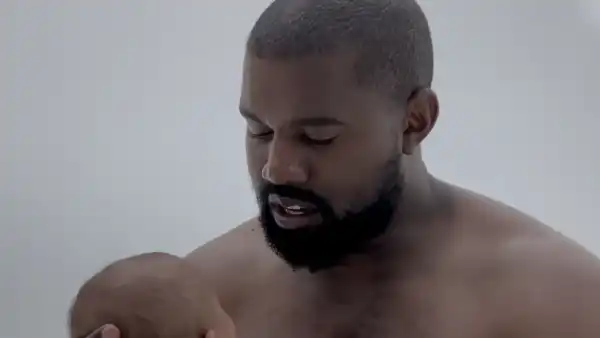
Save this storySave this storySave this storySave this story
In March of the current year, Ye, the performer previously known as Kanye West, revealed an “open casting call” to his thirty-three million followers on X. Those considering appearing for the casting call had ample reasons to be cautious. Prior Kanye West music films had showcased one where he and the rapper Lil Pump sport comical, box-shaped attire and mischievous smiles as they sexually bother a massive Adele Givens; one where Teyana Taylor executes a steamy, almost pornographic dance sequence prior to morphing into a feline mythical creature; and one depicting West in slumber beside almost a dozen celebrity acquaintances, unclothed and snoring, including Taylor Swift, Anna Wintour, Bill Cosby, and George W. Bush—still the globe’s most outlandish polyamorous grouping almost a decade later.
However, anybody still tracking West in 2025 possessed even more compelling cause for unease, as the remainder of his X communication made apparent. The casting invitation had five stipulations. West, a provocative poet on social platforms much like in his compositions, detailed them, with line separations and significant capitalization:
All males
NO FAT PEOPLE
The skin tone of Sean Combs and darker
With shaved heads OR must be willing to shave head if approved
MUST BE COMFORTABLE WEARING SWASTIKAS.
He hinted that the casting session would be for “Carnival,” a piece whose endeavors at pushing limits were so stale (“She ride the dick like a carnival”; “Anybody pissed off, gotta make ’em drink the urine”) that, upon release, it garnered minimal notice. Indeed, he was apparently assembling a film for another tune, one that impacted a century-old sensitive subject so squarely that it did capture people’s attention: a more recent track entitled “Heil Hitler.” In the footage, thirty-five individuals stand in four lines, illuminated by intense UV light, singing the three-word repetitive element of the chorus. (The initial word, maximizing both shock factor and mental discord, is the N-word.) The primary guideline of the casting session appears to be followed, but the secondary, fourth, and fifth seem to have been loosened. A few of the men are bare-chested. Others don attire that isn’t swastikas but vaguely Nordic-resembling animal hides. Their neck muscles clench with anger; the whites of their eyes glimmer in the ultraviolet radiation. Even at the conclusion, as the camera lingers on a figure in a wolf mask and archived sound of a ranting Adolf Hitler resonates in the backdrop, you still struggle to determine if the entire display was supposed to be frightening or amusing.
This stood as a particularly glaring instance, but being manipulated in this manner has traditionally been a common occurrence for anyone who is or was a Kanye West enthusiast—an assembly that encompasses, to a certain extent, anyone who values popular music seriously, although some of us were affected especially profoundly. At his peak as a beat architect and producer, nobody could rival West’s supernatural skill and unceasing innovation. The singular aspect that could contend with his talent was his own equally potent yearning, or perhaps drive, to deface it, complicate it, or discard it. He dedicated two years to crafting “All of the Lights,” arguably the most ambitious and meticulously constructed pop song since “Thriller”—solely to grant the featured rap portion to Fergie. “The Life of Pablo,” West’s 2016 record concerning his unending battle to free himself from negativity, commences with a soaring six minutes of minimalist-maximalist gospel-rap—first the stunning “Ultralight Beam” and then the opening half of “Father Stretch My Hands Pt. 1,” which seems equally promising, until West intervenes to desecrate his own work with some of the most foolish verses ever documented (“If I fuck this model / and she just bleached her asshole / and I get bleach on my T-shirt / I’mma feel like an asshole”). In 2018, he unveiled a delightfully soulful composition titled “Lift Yourself.” His verse on it unfolds as such: “Poopy dee scoop / Scoop dee dee whoop / Whoop dee scoop dee poop.”
Across approximately a decade and a half—commencing in the early George W. Bush era and concluding, coincidentally or not, with the emergence of Donald Trump—West issued, both as a solo performer and as a producer for Jay-Z, Pusha T, and numerous others, one of the most consistently demanding and rewarding collection of creations in the annals of pop music. This constitutes an almost unmatched streak, one that will assure him a position in the esteemed works regardless of how many caveats he insists on affixing to his history. (The Beatles, for example, were only at their zenith for roughly six years—eight, at most.) Whatever else he undertakes, West will probably be perceived as the most accomplished hip-hop producer ever—an honor that consistently struck him as an insulting belittlement of his many other capabilities. He did not desire to be merely a music creator; he aimed to be a President, a clergyman, an adored fashion innovator, a master builder, a business magnate and visionary world-builder like Steve Jobs or Walt Disney. When none of that materialized as he wished, he embraced a villainous persona. As he articulates on “Heil Hitler”: “So I became a Nazi—yeah, bitch, I’m the villain.” For those of us who deeply appreciated West’s output, it’s challenging to overstate the magnitude of this forfeiture. (If you’re a child of the sixties, envision awakening to the report that Bob Dylan was actually a consecutive murderer, or Nina Simone was a COINTELPRO operative, and you’ll possess a general concept.) To an occasional reader of sensationalistic headlines, West’s antagonist phase may have appeared as merely another celebrity succumbing to lunacy, or another instigator attempting to promote his latest endeavor. However, to us these were not mere provocations; they were deceptions.
One straightforward method to perceive Kanye West is as a genius confined within the frame of a youngster who’s perpetually on the verge of an outburst. He retrieves his writing implements, scribbles on a paper towel, then proclaims the outcome a work of art—and frequently, surprisingly, it is—and yet he might shred the paper moments afterward if his disposition shifts, or if he receives anything aside from immediate and absolute acclaim. In the recent documentary “In Whose Name?,” an intimate chronicle of West’s prolonged decline from grace, from 2018 to 2024, we witness this pattern recur repeatedly, at times virtually. While being transported to the White House for a televised Oval Office conference with President Trump, West, in nearly the same manner that he employed while interrupting Taylor Swift’s acceptance address at the 2009 MTV Video Music Awards, shouts over his intermediary, Jared Kushner, “I need to proceed in the precise route that a foreign dignitary would take!” In Uganda, on an excursion with his then spouse, Kim Kardashian, an escort, and an extremely attentive security personnel, West, donning a protective vest overnight and practically vibrating with apprehension (“I don’t feel comfortable here”), compels everyone to pack and return to the U.S. (One detail the documentary verifies, if it wasn’t previously evident, is that it necessitated superhuman quantities of patience for Kardashian to remain wedded to West for the duration she did.) He mentions “my mental health,” and to medication that he has been prescribed but has opted not to ingest. (The sleeve of his 2018 record “Ye” states “I hate being Bi-Polar its awesome.”)
In Basel, Switzerland, he ambles alongside the architect Jacques Herzog, who bestows upon him compliments regarding timeless areas and natural forms. Subsequently, they convene for a gathering with several of Herzog’s colleagues, and West’s atmosphere abruptly transforms to confrontational. He offers a few scarcely coherent remarks, then pivots to one of Herzog’s female associates and requests her response. “Not what are you thinking—what are you feeling?” he utters. “And when’s the last time you actually had a feeling?”
“I’m excited,” she responds, sounding alarmed, “because I aspire to comprehend who you are.” The accompanying music is a mournful drone, treating West’s nonchalant intimidation as the emergence of an assailant in a horror picture. At a specific juncture during this scenario, West is sketching something (the contour of a rooftop?) and, upon the slightest hint that his drawing is not a masterpiece, he tears it apart. “I’m not truly soliciting your viewpoints,” he conveys to the architects he has flown to Switzerland to encounter. “I know I’m right.” He proceeds in this vein for a period, adding, “I am Picasso.” Picasso also possessed inflated self-importance, but at minimum he was adequately cognizant to primarily adhere to visual creations. In the documentary, West dedicates months traversing the globe, discussing his strategies to conceive a church, a school, a “sustainable city that runs off of air, fire, earth, and water”—almost everything with the exception of his intention to create another commendable album.
Presently, the sole avenue to view “In Whose Name?” is to attend a movie theatre. At a daytime screening on release weekend, the Regal Union Square was approximately half filled. Most of the attendees appeared to be Kanye obsessives, perhaps, but not Kanye supporters, if any such individuals remain. When they expressed amusement, they seemed to be deriding West, not engaging with him.
We observe him prior to his ascension onto the stage at Soldier Field, in Chicago, sporting light-toned contact lenses and a dark leather overcoat, resembling a sullen teenager who has been granted an unlimited account and unleashed in Hot Topic. (The impression is heightened by the reality that he’s situated adjacent to Marilyn Manson.) Backstage, after the spectacle, West welcomes Elon Musk and leads him into a vacant, entirely white chamber, which he defines as “the concept of a bedroom.”
“Interesting,” Musk remarks.
They recline alongside one another, gazing up at the ceiling, then arise and engage in uncomfortable grown-up casual dialogue. “So are you and Kim, like, off and on, or something?” Musk inquires. He chuckles, filling the silence, then persists: “Claire and I—Grimes—we’re sort of . . . In the same text stream, she’s, like, ‘I love you,’ and then like, you know, a day later, like, ‘I hate you.’ ”
“I don’t possess answers,” West declares, his whitened pupils staring into the emptiness. “[I have] answers to everything except for that.” The audience chuckled throughout this interaction, as though we were being treated to deleted scenes from “This Is Spinal Tap.”
Even when West’s domestic existence is at its most serene, it persists in being ludicrous. The residence he shares with Kardashian, in Calabasas, is a mausoleum-resembling construction with marble walls and virtually no furnishings. It seems like a terrifying locale to inhabit, but it furnishes the ideal acoustics for Kenny G to visit and perform “Over the Rainbow” on soprano sax, encircled by long-stemmed roses, as West and Kardashian observe—one of the limited domestic activities we are privileged to witness, excluding shouting matches. En route to observe Halloween with his offspring, West states, “I’ve endured so much trauma. The fact that I’m still here . . . every day is a blessing.” It’s challenging to heed his pronouncements, though, because he’s in a full-body costume, his visage obscured by a dog covering. Subsequently, when he sits for a remote discourse on MSNBC, he is concealed again, this occasion in a sort of tin-foil burka. Moments into the dialogue, feeling dishonored by the host’s innocuous inquiries, he attempts to rise in a fury and depart, but the theatrics of his exit is undermined by the clownish sound of crumpling foil.
Throughout the documentary, he reiterates the quintessential refrain of the irritable youngster: forbid me not what I can express. He dons a crimson “Make America Great Again” head covering, and the more it antagonizes individuals, the more it seems to energize him. During a meeting at the offices of “Saturday Night Live,” where he is about to make his seventh (and, as of this composition, ultimate) appearance as a musical invitee, he informs the comic Leslie Jones that his promotion for Trump isn’t truly regarding Trump: “It’s about ‘1984.’ Orwell. It’s about mind control. It’s about Big Brother. It’s about: if I say the word Hitler, am I cancelled?” Not to reveal the remainder of the motion picture, but the response proves to be: Indeed, essentially. We witness as West intersects with a sequence of fellow-celebrities: Drake, Pharrell, Chris Rock, Candace Owens (accompanied by the late Charlie Kirk). Most of them articulate what he desires to perceive. The few who possess the courage to challenge him when he’s mistaken—the comedian Michael Che, the producer Swizz Beatz, and Kardashian—are subjected to verbal abuse or disregarded. By the culmination of the documentary, West has squandered a few billion dollars, his wedlock, and whatever lingered of his prestige. Proclaiming himself “a bit of a masochist,” he insists, “I love this part of the movie.” That renders one of us.
Like most irritable youngsters, West seems to be afflicted by an absence of the solitary item he genuinely requires: an embrace from his mother. Regrettably, for the West lineage and for the sphere, Kanye’s mother, Donda, perished unexpectedly in 2007. “Jeen-Yuhs,” a three-part documentary regarding Kanye that surfaced, on Netflix, in 2022, encompasses a collection of footage of Kanye and Donda collectively, and she comes across as uncommonly spirited and affectionate, the singular consistently stabilizing presence in his existence. In retrospect, forfeiting her appears as the inception of the conclusion. His love-hate connection with his conviction—a constant motif in his work since he crafted “Lucifer” for Jay-Z, in 2003, and his own single “Jesus Walks,” in 2004—now appears inextricably linked in her memory. “In Whose Name?” depicts Kanye, years following his mother’s demise, still striving to reconnect with her: releasing “Donda,” an album with a uniformly black cover; acquiring his childhood abode, on the South Side of Chicago, then sitting within a replica of the residence, onstage, while pretending to ignite it.
The director of “In Whose Name?” is Nico Ballesteros, who negotiated his access into West’s escort when he was a few months beyond high school. Throughout the subsequent years, he captured approximately three thousand hours of documentation, predominantly on an iPhone. Structurally, the film constitutes a bit of a letdown—Ballesteros fundamentally strings together the behind-the-scenes highlights, arranges them in chronological sequence, and incorporates some ominous music and graphics, without any prolonged effort to demonstrate what it all signifies. But that’s almost irrelevant. Ballesteros infiltrated the disarray and emerged with the valuables. For the Kanye devotees amongst us, that’s the principal communal assistance. Amid all the dismal comedy and unrelenting dreariness in the film, there are a handful of instances of optimism, nearly all of which pertain to West generating music once more. He conducts one of his Sunday Service performances, appearing liberated; he stands next to a praying DMX, tears streaming along his visage.
We’ve devoted countless years inquiring what to undertake with the output of monstrous men that, by this juncture, we all comprehend at least a segment of the response. As extensively as we may yearn to distinguish the creation from the originator, many of our most warped and prolific art freaks won’t permit us, because they persist in formulating creations regarding the most atrocious aspects of themselves. You could articulate a justification, theoretically, for why it’s acceptable to view reruns of “The Cosby Show” without being disturbed by what we now discern regarding Bill Cosby. It would be more arduous to present a comparable argument for listening to Cosby’s 1969 comedy record “It’s True! It’s True!,” which encompasses a track titled “Spanish Fly.” Similarly, you can endeavor to relish “Through the Wire” or “Flashing Lights” without contemplating excessively regarding the Ye we recognize presently; but there is no unbiased approach to perceive “Black Skinhead,” a pre-fall single that presently resounds like foreshadowing, much less “Heil Hitler.” Besides, even if you endeavor to set aside the verses of “Heil Hitler” and concentrate solely on the sound, it’s impossible to disregard the reality that the rhythm doesn’t strike with the force that, say, “Blood on the Leaves” formerly did. The subdued, rattling horns don’t resonate as intensely; the percussions don’t sound as complete. In the footage, the ultraviolet radiation seems inexpensive, and the animal coverings resemble that they’re on loan from Party City. It would be an exaggeration to declare that the most unfavorable segment of the “Heil Hitler” footage is its aesthetic sluggishness—the most unfavorable segment, surely, is all the veneration of Hitler—but it’s additionally accurate that the former Kanye would have been excessively arrogant to release something so gaudy.
Following the end credits of “In Whose Name?” unroll, we obtain one concluding glimpse of West, bare-chested, holding one of his infants and vocalizing an a-cappella rendition of “Use This Gospel.” The song materializes on “Jesus Is King,” a brief, inconsistent West record from 2019. That compilation never entirely attains the pinnacles of brilliance that manifest throughout each of his initial seven albums, but at minimum he still seemed to be attempting. Perhaps one day he’ll attempt again. ♦
Sourse: newyorker.com






